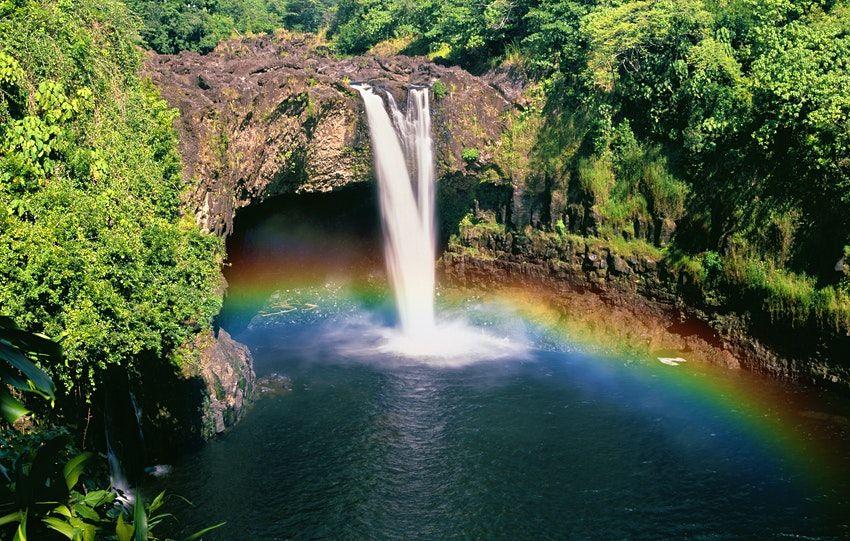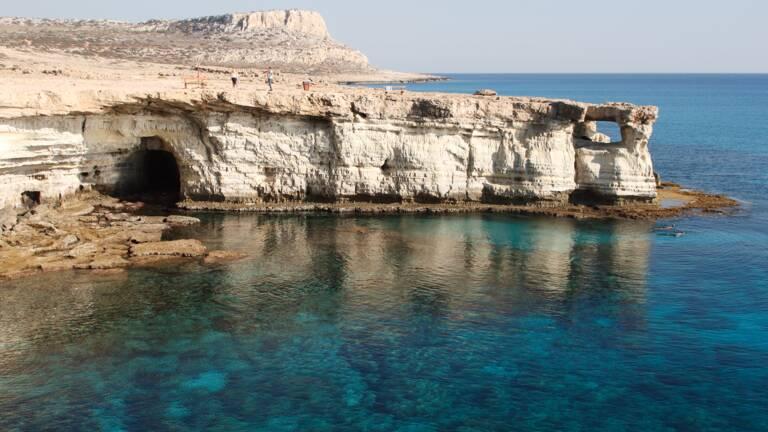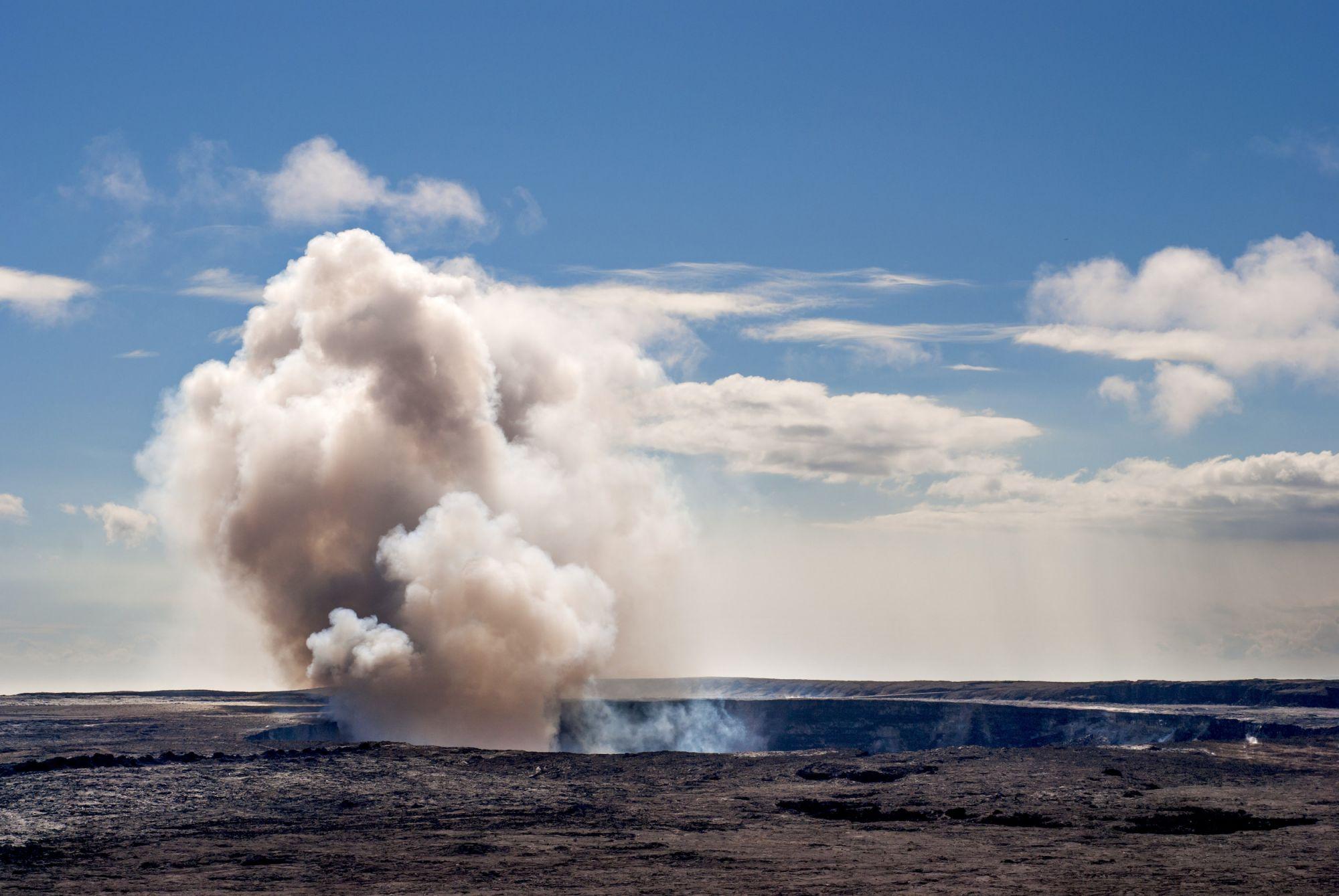New lands emerge in the seething realm of Pele, Hawaiian goddess of volcanoes. The Hawaiian Islands were formed more than 70 million years ago by the eruptions of underground volcanoes. Today, Hawaii, the 'Big Island', is located right on top of a very active spot that lies remarkably deep beneath the earth's crust. The national park protects the scorching landscape generated by this volcanic activity.
The Kīlauea in eruption ©Jorge Villalba/Getty Images
Dominating the scene are two volcanoes. The imposing Mauna Loa is the largest active emerged volcano in the world and rises 4170 metres above sea level. The Kīlauea is a treacherous volcano that has been active for decades: the most recent episode occurred in 2018, when a colossal explosion erupted a river of lava that reached all the way to the sea, drastically altering the volcano's face and the park. Numerous hiking trails lead into this primitive landscape, past apocalyptic lava deserts, smoking craters, the smell of sulphur and ancient carvings on the black volcanic rock. However, the park is constantly changing according to the whim of Madame Pele, who resides in the Kīlauea volcano and likes to flaunt her power in unpredictable ways.
Kīlauea is a treacherous volcano that has been active for decades ©Paul Laubach/Shutterstock
Best itineraries
3 days
Devote at least one day to the park to trek through its lunar landscapes. Spend a night or two in Hilo, devoting some time to an evening drive and hike on Mauna Kea for stargazing. After a drive along the Hamakua Coast, visit the town of Honokaa, home to sugar cane plantations, and then head into the ancient Waipio Valley. After passing through Waimea (Kamuela), a centre of cattle ranching, drive through the tranquil countryside of North Kohala to trek the Pololu Valley, visit Mookini Heiau and rest in the picturesque town of Hawi.
Lava makes its way into Hawai'i Volcanoes National Park ©Westend61/Getty Images
9 days
Follow the itinerary for three days and add a day to see manta rays in South Kona. Take a plane to Oahu and base in Kailua for five days. Visit the World War II monuments at Pearl Harbor, west of Honolulu, and snorkel Hanauma Bay. Drive along the Windward Coast, stopping along scenic beaches and to trek the misty Koolau Mountains. Grab a 'shave ice' and join the surfers in Haleiwa, hit the water in the lagoons of Ko Olina and hike in the windy Kaena Point State Park.
The misty Koolau Mountains ©Evan Austen/Shutterstock
Sign up for our newsletter! For you weekly travel tips, special offers, stories from around the world and 30% discount on your first order.
The journey
How to get there
The park is located on the island of Hawaii. Honolulu International Airport on Oahu is the main entry point. From here, internal flights depart for the island's two main airports: Hilo International Airport and Kona International Airport. The park is 48 kilometres (45 minutes) from Hilo and 153 kilometres (2 hours 45 minutes) from Kailua-Kona along Hwy 11.
Inland transport
The village of Volcano, about 3 kilometres east of the park's main entrance, is a good base. There is no public transport within the park, so you will need to hire a car.
Hanauma Bay ©Valentin Prokopets/500px/Getty Images
When to go
Clouds and rain are the order of the day (after all, this is a rainforest), but August and September have more clear days on average.
Try to leave early. The park is open 24 hours a day, but the crowds and tourist buses start arriving around 10am.
The eruptions don't follow schedules: try to keep yours flexible enough to take advantage of the opportunities on short notice.
Related articles

Hawaii cruise: when to go, prices and itinerary

Why Hawaii is the best place in the world to see rainbows

Hawaii: a paradise to discover

Low-cost Hawaii: how to save in paradise

The most beautiful places in Hawaii

Hawaiian Islands: where they are, when to go and what to see

Oahu, Hawaii: where it is, when to go and what to see




